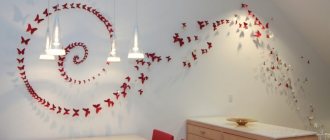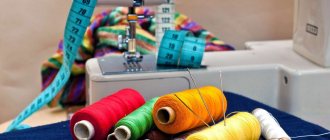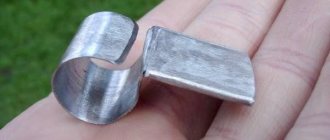What tools are needed to assemble furniture yourself?
Hi all! Even if you are not a professional furniture maker, but rather an amateur, you may still be interested in a tool for assembling furniture.
When buying furniture, in extremely rare cases it arrives already assembled. Basically, these are structural elements that need to be combined with each other. This is how items of upholstered furniture, kitchen furniture, cabinet furniture, etc. are purchased. Here is a set of parts and fasteners. It doesn’t matter whether it is made of chipboard, chipboard, solid wood or even natural wood.
A furniture maker always has a certain set of tools in his arsenal, which allows him to save on the services of assemblers from the store and do everything with his own hands.
If you want to do the assembly yourself, then to make ready-made structures you will need to assemble a specific kit. Some you already have at home, other components are easy to buy at Ikea or similar stores. All tools that may be useful during assembly are conventionally divided into marking and assembly (fixing).
Features of self-production
When designing a conductor for confirmation, it is necessary to correctly calculate what functions it will have to perform in the future. It should be done for the most commonly used fasteners in the house. If such a device is required by furniture makers for constant work, then it is better to buy a factory model, which is distinguished by great precision. In addition, manufacturers often include additional fasteners, stops and templates in the kit.
Growing an apple tree of the Silver Hoof variety
Marking devices
By marking we mean auxiliary tools. There are rarely problems finding them, since the main part is already in your home from the very beginning. Even if you haven’t assembled furniture before, but have repaired, drawn, measured, screwed something, etc.
This section includes universal tools, that is, you will need them in different areas of home activities. There is no need to buy them specifically in order to assemble furniture with your own hands.
- To get started, take a tape measure. Moreover, choose a length of at least 3 m. It will allow you to know exactly what dimensions of a particular product, make an indent, etc.;
- Pencil. Where would we be without him? It is easy to wash, but can be marked. For furniture work, an HB pencil is suitable, that is, with a medium degree of hardness;
- Take a square. Without it, it is difficult to draw clear and even lines. Particularly relevant when working with fiberboard, chipboard and MDF;
- The awl will help in situations where you need to drill surfaces with sheathing, where there is a risk of wrapping around the drill;
- Good old sandpaper. Rubs out uneven surfaces. If you have a ready-made furniture structure, or components made of wood, chipboard and other materials, take fine grain;
- Sharp knife. Better stationery. Copes perfectly with cuts and removing unnecessary elements;
- Jamb-knife. Relevant when cutting PVC furniture edges;
- Classic pliers. Unscrew something, pull it out, etc.
I don’t think there will be any problems finding these components. Especially if you live in Minsk, Moscow or Kyiv.
When you have laid out the markings and prepared the materials for your furniture, it’s time to put everything together.
Now you can move on to the next set, which will be directly involved in the furniture assembly procedure.
Tool sets
Tools for the production of upholstered furniture do not need to be purchased as separate elements. Very interesting sets are completed by manufacturers for handmade furniture at home. In this case, the buyer does not have to select each individual tool taking into account its operating parameters and properties. Manufacturers thought through everything in advance and equipped the set with exactly the tools and operating parameters that a home craftsman needs.
It is better to buy sets of tools for furniture from large and trusted both foreign and domestic manufacturers.
A set of tools for a professional is also convenient in that it is compactly located in a special bag, which has a strap for carrying on the shoulder. It is known that a well-equipped furniture craftsman can do in one shift what previously could only be done by a team of workers.
In this set, everything is thought out to the smallest detail. And the kit is equipped with exactly the necessary tools, and their location in a portable box.
Typically, manufacturers of tool sets have long been known in the market for the high quality of their tools and their reliability. There is no doubt about such a purchase.
Assembly tool
You should separately look at what devices, tools and accessories are needed during direct assembly. Of course, for some tools, especially the electric ones presented in the list, you can find a manual alternative. But this is not always a wise decision. You'll soon understand why.
If you have watched numerous videos on assembling furniture products, you have probably seen different tools in the furniture maker’s arsenal.
It’s not a fact that you will need a jig-type device used for drilling holes in products, but the next set will certainly come in handy.
- Screwdriver. An alternative is a regular screwdriver. But for a furniture maker it is better to have a power tool that tightens and unscrews fasteners and does the job in a couple of seconds, while it takes several minutes to turn with a screwdriver. At the same time, you also need to have a set of good screwdrivers on hand;
- Drill. In the case of furniture assembly, a power of 500 W is sufficient. Indispensable in preparing holes in the furniture itself, as well as in walls and other surfaces for further installation;
- Drill. This is a very obvious addition to the previous tool. Moreover, it is better to buy a set of drills from 4.5 to 10 mm, designed for working on metal, concrete and wood. Situations vary;
- Jigsaw. Again, electric is better, although there is also a manual one. Without it, it will be difficult to perfectly fit wood, MDF or chipboard products;
- Hammers. Take a regular metal one and definitely a rubber one;
- Hexagons. Since almost all furniture is now assembled using confirmats, you cannot do without hexagons of different sizes;
- An iron or a special construction-type hair dryer. Such devices will be useful for those who plan to independently apply furniture edges or glue films to facades;
- Furniture clamps. Such a tool cannot be considered mandatory if you are only assembling furniture from ready-made elements made at a furniture factory. If you make furniture yourself, then clamps will help you process and connect elements with rectilinear shapes;
- Strepler. And not clerical, but construction. It helps well when fixing drawers, back walls, covering upholstered furniture, etc.
I cannot guarantee that this set will be optimal for your situation. However, furniture, as well as the tasks facing the assembler, are very diverse.
It depends on the specific situation what will be useful to the master, and what he will not even look at due to the lack of need to use this or that device.
Personal experience suggests that the same drill or screwdriver is not always needed if you assemble furniture from ready-made elements. All holes are pre-provided by the manufacturer. And sometimes an ordinary screwdriver is enough to tighten several screws. However, confirmats are often used instead of self-tapping screws. But you can't tighten them with a screwdriver. Here you need ordinary and inexpensive hexagons. At the same time, a good electric screwdriver costs quite a lot. First, think about how much work you have to do before spending money on a tool that may not be useful at all.
What is your standard set when you assemble or make furniture yourself? Personally, as part of my last build, I had hex keys, a regular Phillips screwdriver, a rubber mallet and a lot of patience in my arsenal. Unfortunately, the screwdriver failed at the most crucial moment, and about 40 fastenings had to be done manually. But now, with peace of mind, I can buy myself a new high-quality power tool, which I have long dreamed of.
Thanks to everyone who reads our site! Subscribe, leave comments, ask questions and don’t forget to tell your friends about us!
Common mistakes
Each private furniture maker has his own secrets on how to quickly and accurately assemble furniture. Some professionals use a table to assemble furniture, while other craftsmen can mount a large tall cabinet on the floor and install the finished structure, measuring the diagonal of the room and the product.
Difficulties may arise with inserting sinks into kitchen countertops, making radius curves, for which you need to use special equipment, hanging mirrors with glue, tape, or adhesive.
To become a professional assembler, the future master must be able to draw up a project, calculate the consumption of materials, perform detailing and cutting of chipboard, MDF boards, use equipment, tools and have some design skills. Then the finished product will be distinguished by its impeccable quality, durability, and long service life. Frequent mistakes that novice craftsmen make when assembling furniture:
- start work without first checking the availability of the mounting kit, basic structural elements, and without studying the manufacturer’s instructions;
- Universal prefabricated furniture begins to be assembled by connecting large parts - you need to decompose all the elements into units (drawers, cabinets, tables), and try to assemble a small structure;
- they don’t pay attention to the specifications in the instructions - in vain, at first glance the parts are similar, but there are left and right elements, fronts of upper and lower cabinets, and other assembly nuances;
- ignore the need to assemble the product on a hard, clean surface. For work you need a sufficient amount of free space; you can use a device for assembling furniture;
- panels made of MDF material can be damaged by using an electric tool (drill, screwdriver) - use screwdrivers until you acquire the necessary assembly skills;
- do not change the diagonal of cabinets (compartments, bedside tables, chests of drawers) before installing the back wall made of fiberboard - this leads to distortion of the part and the entire structure;
- do not take into account the assembly order specified by the manufacturer in the instructions. The result is low quality assembly, dismantling and re-installation of the product;
- they do not check the holes for fixing the fasteners, do not measure the distance between them to ensure compliance with the drawing - as a result, they have to cover the defects with plugs.
There are craftsmen from whom you can hear that they violate assembly technology in order to quickly complete the work - for example, “I hang the top of the kitchen unit before installing the lower cabinets.” Technically, this is not true - the assembly of a complex kitchen structure begins with the installation of the lower corner cabinet (often a sink), then install the remaining floor units, connect them together with self-tapping screws or intersection ties, cut in the sink, install the countertop, and only then proceed to install the upper tier of the kitchen headset There are many such subtleties in the process, and to do the job accurately, watch the video on assembling furniture.
When the master has assembled a furniture structure using simple equipment, fasteners, tools and accessories, he must make adjustments, check that there are no visible technological gaps, and that the doors are diagonal. Distributing and assembling furniture is not an easy task, but after acquiring the appropriate skills, everyone will be able to gain valuable experience in assembling furniture units of various designs. To make furniture assembly easier, the video below will help you understand the process.
This activity can be used as a business option in several steps - ordering factory furniture, delivery to the consumer in your car, installation at the installation site. Presenting photos of assembled furniture will expand your customer base if the furniture assembler is interested.
Tools for furniture assembly
- Electric screwdriver. Indispensable for screwing in screws and attaching fittings.
A screwdriver will help you speed up the assembly process
Drill for drilling holes in chipboard, it is desirable that the drill has a reverse
Drills for wood and metal of different diameters
A jigsaw is needed for sawing off parts
You may need a rubber hammer if you need to knock something and put it in its place.
Hex key for confirmation for assembling cabinet furniture
Construction hair dryer for gluing edges
Furniture clamps for fixing, gluing, joining parts
A stapler will be very useful for stuffing the back wall of fiberboard
Remember to be vigilant and cautious when using these tools. Don't act hastily. It is best to invite an assistant.
Fixing tools have an important role in twisting furniture, and also as important “helpers”. These and other gear perform the function of installing fragile parts (mirrors and handles). They help attach and adjust doors.
Selecting a model for production
Conductors of industrial production can be highly specialized and universal. Templates of the first type are used to perform certain operations on typical parts. Universal devices are suitable for working with different materials and objects of various configurations.
Based on design features and functionality, conductors are divided into the following types:
- overhead - when used, they are applied to the surface in the desired area, fixed with clamps or held by hand. Used for drilling holes in flat parts;
- rotary - the working part moves in both vertical and horizontal planes. Used when working with elements of complex geometric shapes and to create holes, the axis of which must be located at an angle;
- tipping - used to create holes in perpendicular planes.
The conductor device can be specially created for a certain type of fastener: dowels, confirmations, screws, corners. There are devices to simplify the process of installing fittings.
According to the type of fixation, furniture jigs can be sliding or fixed. The former can be moved freely over the surface if necessary, while the latter are rigidly fixed in the right place. The presence of an adjustment mechanism will help to combine the device with different types of workpieces.
For large furniture manufacturers, the availability of a variety of additional accessories plays a decisive role, since they significantly reduce time costs. In this case, the cost of the tools does not matter much. A completely different approach to purchasing the necessary equipment from those who have a small furniture production facility or from independent craftsmen who produce certain types of furniture. In this case, making furniture templates with your own hands turns out to be much cheaper and more practical. The choice of the necessary options and the complexity of the device are determined not only by production needs, but also by the skill and experience of furniture manufacturers.
Overhead
Turning
Universal
Other tools
- Self-tapping screws and confirmations.
Self-tapping screws and confirmations for furniture assembly
Rafix - eccentric couplers, which are used for fastening horizontal and vertical furniture parts.
Minifix is used for joining furniture pieces made of chipboard, MDF, plywood, solid wood
A drill for furniture hinges is used when assembling furniture in those places where it is necessary to install furniture hinges
This drill differs from other drills in that it drills an additional hole for mounting the confirmat head
Furniture tools are very different. They differ in size, functions, and purpose. This can come as a shock to a novice needleworker. It is difficult to know the features of each device, and even more so to decide on the fly where it should be used. But the right advice and practice will help you achieve your desired heights.
When creating such a specific creation as furniture, you need to get acquainted with another interesting group: consumables. These are any materials. They are unique in that they lose their properties during use. They are indispensable when twisting cabinet furniture.
Preparatory stage
When assembling furniture, you should follow a certain order of connecting parts. There should be a diagram or detailed instructions. Many people, having received boxes with packed furniture parts, rush to unpack them immediately. In this case, there is a high probability of confusing all the contents. Before attaching any element, it is necessary to examine it for burrs. If found, they should be removed immediately to avoid future injury. Uneven surfaces must be leveled.
The assembly instructions allow you to determine how any part of the future product should be attached. To simplify the work, symbols are used in the diagrams. This way you can easily determine the next step by reading a minimum of text.
Types of consumables
- Jigsaw files. Thanks to removable files, it is possible to saw through chipboard.
Various jigsaw files
Quality bits for driving screws
You will need a Forstner drill bit to cut holes for overhead or internal hinges and holes for a minifix tie.
Screw and twist drills for wood for drilling through holes and holes in the ends of parts
What tools are needed to make furniture and built-in wardrobes at home?
The bulk of cabinet furniture is made from laminated chipboard. It can be equipped with elements made of MDF, wood, glass and other finishing materials. You should immediately think about what tools you need to make furniture with your own hands at home. Some stages of work require the presence of rather specific devices, and their absence will create unnecessary difficulties.
- Measuring tool for furniture making
- Tool for cutting and edging furniture parts
- DIY tool for pre-assembling furniture and wardrobes
- What tools are needed to assemble furniture with your own hands and then install it locally?
Measuring tool for furniture making
At all stages of making furniture with your own hands, you will need a measuring tool. Even if you just wanted to assemble ready-made IKEA furniture, you can’t do without measurements.
- Markers and pencils. Markers come in different thicknesses, mostly alcohol-based, which can be easily erased when the mark is no longer needed.
- Tape measure and square. It is worth taking a responsible approach to the choice of this measuring instrument and giving preference to those options where there will be no doubt about the accuracy of the calibration.
- Awl. Using an awl and a pencil, it is convenient to mark the places for screwing in self-tapping screws and holes for confirmations, shelf holders and other fasteners.
- Level. Strictly speaking, this tool for making furniture with your own hands will only be needed at the very initial stage - measurements. In order to correctly develop a design project for a built-in wardrobe, it is important to take into account the curvature of the walls and the difference in horizontal and vertical planes. You will also need a level when installing already assembled modules.
- Furniture templates and conductors. Ready-made furniture jigs for marking holes for guides, hinges, handles and other fasteners make the process much easier. After all, in fact, all connecting holes in furniture are applied in the same way, according to the well-known “System 32”.
Furniture templates for marking furniture parts can be purchased ready-made.
Or make it yourself from thick cardboard, leftovers and scraps of thin plastic, fiberboard, HDF.
Manufacturing
To successfully make cabinet furniture with your own hands, you must carefully follow all the steps:
- preparation of parts;
- processing of sections;
- marking of fittings;
- installation.
Having completed the calculations and begun assembling the product, in no case should you work without a drawing or act at your own discretion. If a new idea arises, you should create another diagram that will take into account all the amendments.
Preparing parts
When working from scratch, you first need to cut out the furniture parts - thick paper or cardboard will do. Next, you will need a high-performance machine with a high cutting frequency. Having placed the workpieces on it, you need to cut the material, saving space if possible. This will help reduce wood costs.
Ready-made options can be found in furniture departments and on the market. In this case, no machines will be required. If the raw materials are not processed, then the parts must first be covered with self-adhesive film or special plastic.
Cut partsCut
Processing slices
Before you start assembling the parts, you need to glue the sections. For this you will need edge tape. Before work, you need to make sure that the humidity in the room is low - it is advisable to dry and warm the workshop well. You will also need equipment; a regular iron and a construction knife will do. Sometimes the edge is initially equipped with a sticky layer, then there is no need to further treat the surface.
During gluing, the iron should be kept at a short distance from the cut to prevent possible displacements and to secure all parts well. If you overexpose it, the edge may overheat and burst. When it is fixed, use a knife to trim the edge and smooth out all the irregularities.
Tape over the cuts. Trim the edge. Clean up any uneven areas.
Marking of fittings
Correct technology involves placing the finished parts of future furniture on a flat surface for marking. Following the plan, you need to mark all the places where the fittings will be attached. It is advisable to double-check the dimensions, since an error of 1 cm can distort the entire structure. Next, you need to make holes in the marked places and screw in the fittings.
Mark and drill holes Screw in fittings
Tool for cutting and edging furniture parts
Cutting parts to size and then gluing the visible ends is rarely done at home. It is much easier to order cutting and edging in a workshop. Many companies that supply chipboards offer these services locally. It's very convenient and ultimately cheaper. If you take into account your own labor costs for the need to transport entire sheets of chipboard, their loading and unloading, the cutting itself, sanding the ends and covering them with melamine tape, as well as all the costs of electricity and consumables. Value your time.
In addition, cutting on a wide-format machine is much more accurate and of higher quality than manual cutting, and PVC edges are many times superior to melamine edges in terms of durability and aesthetics.
But there are some designs of built-in furniture (in particular wardrobes) that require adjustment and sawing in place. Some beveled and radius shelves are also designed during installation. This is how hobs and sinks are embedded into kitchen countertops.
In these cases, you should ensure that you have the following tools for making furniture:
- Jigsaw with wood files . The main electric tool for making furniture with your own hands, if you need to saw parts at home. The length of the file is selected according to the thickness of the material (it can be fiberboard with a thickness of 4-5mm, chipboard with a thickness of 10-25mm, postforming with a thickness of 26-38mm). As well as narrow files for decorating radii with reverse and straight teeth without streaking.
- Manual router for removing edge overhang . It will be needed when gluing and subsequent processing of PVC edges with a thickness of 1-2mm. The technology requires a certain skill and additional study to carry out at home.
- Grinder machine. An indispensable tool when installing built-in wardrobes. Using a sander, you can adjust the parts to fit the unevenness on the wall, for a tighter and more aesthetic connection without gaps. The grinder is also used to smooth the ends after cutting with a jigsaw, in order to glue the melamine edge more accurately and evenly.
- Iron or hair dryer. The melamine tape is glued with a regular iron and gently pressed until it is completely glued. You can use a hair dryer for these purposes, manually pressing the edge with a rag. Wear gloves, otherwise you may get burned.
- A stationery knife and a blunt knife, sandpaper 40, 60, “one” and “zero”. Excess glue and edges are carefully cut off with knives, then the cut edges are sanded to a visually aesthetic appearance.
- Silicone sealant or wax, wax restoration crayons, touch-ups for masking defects and scratches . This set of consumables cannot be classified as a tool for assembling furniture with your own hands, but in the process you will definitely need it for processing cuts, accidental defects, etc.
DIY tool for pre-assembling furniture and wardrobes
Before assembly, it is necessary to mark the parts and drill the joints for confirmation in the ends and front parts of the chipboard. This process will make further assembly much easier.
Also, preliminary marking will be required for attaching various lifting and sliding mechanisms, furniture hinges, shelf holders, rod holders and other fittings.
For the marking process, at the initial stage you will need all the measuring tools described above.
To add parts (drill holes) at home, you will need a simple hand tool:
- Drill. Drilling holes in furniture parts does not require a high power drill; 350W is sufficient. The main thing is that it is light and comfortable - after all, for large volumes of making furniture with your own hands, you will have to hold this tool in your hand for quite a long time. The drill will require a set of drills - confirmat, wood and metal drills 3, 4, 5, 7, 8, 10mm. And also Forstner drills 15 and 20mm for installing minifixes and eccentrics, 26 and 35mm for inserting furniture hinges, core drills 60.65 and 80mm for inserting lamps, plugs for wires (if required by the purpose and design of the furniture).
- Clamps and vices. Needed when assembling large-format parts and gluing (for example, when assembling furniture dowels). Also used for direct drilling in place, without preliminary additives, to evenly clamp parts in the desired position. It is better to use quick-release clamps. Homemade variations of clamps and vices are also useful for this purpose.
- Mallet. Used to install hidden fasteners (furniture dowels) and adjust conventional ones. Indispensable when inserting dense removable shelves into designated niches, since it allows you to precisely and without damage “fit” the parts to the right place.
- Hammer . Needed for attaching back walls and bottoms of fiberboard drawers to small nails. But many assemblers have gotten used to screwing fiberboard onto thin self-tapping screws. Or attach to staples using a construction stapler.
What tools are needed to assemble furniture with your own hands and then install it locally?
The process of assembling cabinet furniture can be divided into three stages:
- Pre-assembly of cabinets and cabinets, drawer frames.
- Installation of furniture modules with built-in and hanging at the location.
- Hanging and installing furniture facades, regulating the movement of moving mechanisms.
In the process of assembling and installing furniture with your own hands at home, you will need the following tool:
- Screwdriver. Lightweight, with a removable battery of medium power, with reverse and two screwing speeds. It is better to use with a set of bits with magnetic attachments.
- Screwdriver Set . Includes long-shank screwdrivers for driving hex and Phillips screws into tight spaces, plus a reversible screwdriver with bit set for hard-to-reach areas.
- Hammer . Will be needed when installing wall-mounted kitchen modules and shelves in built-in wardrobes. Just like a drill, there are no increased power requirements. As a rule, a furniture assembler and installer only deals with drilling simple holes for dowels and anchors in partition walls.
- Extension cord . Needed to be able to connect an electric tool in any “spontaneous” assembly location. It is better to purchase one with a wire length of 5-10m.
- Hacksaw, metal scissors, grinder . In built-in wardrobes, you will need to cut a pipe with a diameter of 25 mm for installation under the hangers. And also file the top and bottom rails to fit the size of the niche in place, overhead side profiles, etc. When installing a kitchen, it is often necessary to cut parts of the hood, various pallets, joining strips, baseboards, and aluminum plinths in place.
- Chisels, files, pliers, side cutters, pliers, wrenches and other small hand tools. In the process of installing a built-in and free-standing wardrobe, you may need any other hand tools that any home craftsman usually has.
The process of making furniture at home is quite labor-intensive and requires the arrangement of a special workplace. It is better to transfer all work on cutting, edging, and preliminary drilling of parts for final assembly to a workshop or garage. A tool for assembling furniture with your own hands is, in fact, a universal “gentleman’s” set that should be in any home or apartment. If you plan to assemble and install a wardrobe or kitchen on your own, just make sure that the necessary items are available and operational, buy additional consumables and other small items.
Selecting a screwdriver
Despite the fact that many operations for screwing fasteners can be performed using an electric drill, if you have the financial means, it is advisable to purchase a screwdriver, which will not be superfluous in the arsenal of an amateur furniture maker.
The advantages of a screwdriver compared to most widely used models of electric drills include:
- autonomy of drilling and fastening operations;
- possibility of working at minimum spindle (chuck) speeds;
- The compactness of some types of screwdrivers, called “electric screwdrivers” in furniture makers’ slang, allows you to perform operations in hard-to-reach places in the internal compartments of cabinets, cabinets and pencil cases.
When choosing a screwdriver, you should adhere to the following recommendations:
- this type of power tool should be light, small-sized, maximally ergonomic and convenient to use;
- It is desirable to have a replaceable (spare) battery;
- the presence of spindle (chuck) reverse is mandatory;
- when choosing a screwdriver, it is advisable to give preference to models equipped with a quick-release chuck;
- in addition to an electric drill, only cordless models should be purchased;
Features of choosing a battery:
- Despite the high cost, preference should be given to screwdrivers equipped with lithium-ion (Li-Ion) batteries, which, compared to the widespread nickel-cadmium (Ni-Cd) and nickel-metal hydride (Ni-MH) batteries, do not have " memory effect";
- the screwdriver must have a battery “zeroing” button, which helps reduce the negative consequences of the “memory effect”;
- Screwdrivers with nickel-metal hydride (Ni-MH) batteries allow a greater number of charge-discharge cycles.
What tools do you need to make your own furniture?
This article describes the necessary tools for making furniture with your own hands.
Assembling and making furniture yourself is a creative and exciting activity.
To avoid turning this exciting process into agony, prepare the necessary tools in advance.
If you don’t have your own, you can always borrow some equipment from friends, acquaintances, or rent it.
A beginner carpenter's kit does not have to contain all existing fixtures - it can be minimal, but correctly selected.
Necessary tool for furniture making
From the variety of carpentry tools, the subject of choice remains tools for screwing, drilling, cutting and measuring.
In the first steps, include in the kit for your own workshop only what is necessary - this will be enough to make furniture yourself:
- electric;
- manual;
- measuring;
- consumables and equipment.
For high-quality and simple work, the list of corded or cordless tools is as follows:
- drill;
- screwdriver;
- jigsaw;
- Grinder.
In this case, the tool does not have to be mains electric.
The modern assortment is widely represented by battery samples.
In the process of gaining skills and moving on to more complex tasks, the list can be gradually expanded.
Drill
A drill is the main component of any furniture making workshop.
In the first steps, you can get by with an electric drill with hammer and screwdriver functions.
The presence of such additional options will allow you to save on the purchase of a hammer drill and screwdriver.
If possibilities allow, then the best choice is a corded electric drill.
Thanks to the impact mechanism, they work with hard surfaces, assemble and install built-in or cabinet furniture.
The rotation speed regulator allows you to change the speed for the desired functions: drilling metal or wood, tightening screws, pulse or impact function.
Screwdriver
A screwdriver is also one of the main specialized “tools” of a carpenter for assembling and producing furniture.
The functionality involves installing furniture fittings, screwing and drilling.
Modern models are equipped with pulse and shock functions, and the introduction of battery technology allows you to organize a convenient workflow even in the absence of electricity.
The keyless chuck allows you to change accessories in an instant to perform various operations.
The two torque speeds are equally useful.
The operating time depends on the battery capacity.
When choosing a screwdriver, you should pay attention to the presence of two batteries - a spare power supply will allow you not to interrupt work while recharging.
Jigsaw
Electric jigsaw - this tool allows you to cut shaped furniture and its parts with high precision.
Used in the following cases:
- cutting of cloths;
- making cutouts for built-in appliances;
- size adjustment;
- figured cutout or rounded catch, etc.
The jigsaw mechanism is designed to adjust speeds and change the inclination of the cutting blade.
For metal work, special files are used.
Grinder
A grinding machine is designed to clean and level a surface or cut line.
It does an excellent job of removing varnish, old paint, or pre-treating the base before applying paintwork.
Measuring instruments
Measuring tools for making furniture yourself:
- roulette;
- metal ruler, at least 1 meter long;
- calipers;
- steel square;
- laser pointer, level or level.
Hand tool
Hand tools for the first experiments in furniture production compare favorably with electric analogues in cost, but lose in performance.
Despite this, some models are now irreplaceable.
In every carpentry you will need:
- hacksaw or saw for wood and metal;
- chisels;
- a set of flat and Phillips screwdrivers;
- pliers, pliers, wire cutters;
- planes, jigsaws, jointers;
- hammer, mallet.
A furniture stapler will come in handy.
It is used for upholstering furniture and installing thin walls made of hardboard, plywood, etc.
Equipment and consumables
One of the important equipment for making furniture is a workbench.
The work table must be equipped with a vice and clamps to securely fix the elements.
The following set of working equipment will be needed:
- wood crowns for holes with a diameter of 20 to 130 mm;
- drills for metal and wood, with a diameter in the range of 2-12 mm;
- Forstner drills for drilling non-through, even holes, for example, for hinges;
- drills with extra-strong hard tips for working with concrete and brick;
- set of bits
Grinder
In individual furniture production, a belt sander (sander) will be required when performing operations together with a jigsaw. For example, when cutting out curved parts with an electric jigsaw, the cut of the particle board and MDF board must be additionally sanded before gluing the furniture edge.
When choosing a specific belt sander, you should adhere to the following recommendations:
- the power of this type of power tool must be at least 500.0...650.0 watts;
- the machine must allow the use of sanding tape up to 100.0...125.0 millimeters wide;
- preference should be given to products equipped with a dust collector;
- It is advisable to purchase a sanding machine that has a smooth or stepped (multi-speed model) adjustment of the speed of the sanding belt;
- your choice should be on sanders with the function of centering the sanding belt;
- this type of power tool, just like a jigsaw, should be light in weight and equipped with a comfortable ergonomic handle.
On a note!
The most versatile and easy to use are various samples of belt sanding machines from the MAKITA brand. Despite their high cost, their versatility, functionality and ease of use are significantly superior not only to their Russian counterparts, but also to products from BOSH.
Additional tool
A hammer drill is useful in the production or assembly of furniture.
This is a highly specialized tool with high impact power.
The main purpose is to drill holes for mounting and installation of built-in furniture.
Over time, a circular saw will be in demand in the carpentry workshop for cutting wooden panels, countertops and furniture panels.
The miter saw is designed for cutting at an angle.
In addition to wooden elements, this tool is used for cutting aluminum profiles.
High speeds ensure an even cut, without chipping or cracking.
Using a miter box allows you to replace an electric saw with a regular hacksaw.
The miter box is designed for smooth cutting at different angles.
Recommendations
The main principle in equipping your own workshop is to purchase tools as needed.
You should start with simple products and amateur tools, gradually improving your skills and craftsmanship.
Moving on to more complex tasks, purchasing professional tools for making furniture will become a necessity.
Due to the high cost, do not rush to buy everything.
Focusing on the cheapest models is the most common mistake.
There is also no need to purchase expensive options at the initial stage.
The main thing is convenience and the ability to complete the necessary tasks that lie ahead of you.
Now you know what tools you need to make your own furniture.
DIY furniture assembly tools
In order to save money, many owners of houses and apartments decide to assemble purchased or ordered furniture with their own hands. Indeed, you can do everything yourself, but you need helpers - special tools. The RMNT website will tell you exactly what is needed to assemble furniture with your own hands.
The portal Rmnt.ru has written more than once about what tools a home craftsman will need to perform a variety of tasks. We wrote about a set of tools for an electrician, a woodcarver, a blacksmith, a mason, and a gardener. Now it’s time to talk about the minimum set of tools for a furniture maker, or rather, one who decided to become one temporarily in order to assemble a hallway, wardrobe or kitchen set with his own hands.
The first thing you need is to take measurements so that everything is even, smooth, and beautiful. For this you need:
- Level.
- Pencil for marking.
- A square to maintain right angles, it is most often needed to install shelves.
- A tape measure for setting the diagonal of any furniture, as well as for clearly attaching the bottom of drawers and the back wall.
Without a doubt, the most important tool is the drill/driver. It is with them that you will quickly and reliably fasten self-tapping screws, dowels, screws and other fasteners. A drill also helps to drill holes for handles, and is sometimes used for routing hinges, minifixes and rafixes.
Important! You will need special attachments for confirmations and screws; make sure you have them in advance.
Jigsaw. Better, of course, is electric. You will need it when you need to cut a hole for a sink in a laminated chipboard countertop, cut out a space for an outlet, or trim individual pieces of furniture.
Hammer. Essential when you need to drill holes to attach bookshelves to the wall, the top row of kitchen cabinets, and so on.
Furniture, construction stapler. It is needed not only for upholstery of upholstered furniture. The back walls and bottom of the drawers are attached with 15 mm hardened staples.
Screwdrivers. Most often you need flat and cross ones. Despite the fact that you will screw in the fasteners with a screwdriver, a screwdriver will be useful to delicately bring everything to the required strength, adjust the opening of the door, and tighten the minifixes and rafixes.
Set of hexagons. They are the ones that most often adjust the doors of sliding wardrobes, and also tighten many special furniture fastenings.
A utility knife or a blunt knife. It will be useful to you at the first stage, when you need to release the parts of your future cabinet or kitchen set from the packaging. It can then be used to trim door seal brushes and trim the UPVC edge.
In addition, during the work you may need:
- A silicone caulk gun if you are installing a sink into a kitchen countertop or sealing something else.
- Clamps to clamp some parts for trimming or to temporarily fix them before fastening.
- Pliers.
- Hammer for adjusting tight parts.
- An adjustable wrench if you are assembling upholstered furniture.
- Confirmation drill.
Most of the tools we have listed are simply necessary to quickly and effortlessly assemble cabinet or upholstered furniture. We are confident that you will be able to cope by following the manufacturer's instructions, as well as using manual and electrical assistants.
Scheme and drawings
In order to independently assemble any furniture structure, the craftsman needs a drawing on which the technological process of installing the assembly unit is “outlined” in detail and clearly. The presence of schematic images simplifies the task. It is worth noting that the manufacturer is not responsible if customers damage wood chips, mirrors, or plastic parts during the assembly process, so the work must be done carefully, use mechanical equipment, and carefully study the attached diagram and instructions. What useful information does the drawing contain:
- instructions for assembling the unit (kit). Typically, the manufacturer indicates that the order’s complete set of parts, fastening, connecting, mounting, and decorative fittings must be checked upon receipt of the goods;
- the assembly of Italian furniture or a regular set from a furniture supermarket begins in the same way - with studying the specification, which indicates the number of parts, their name, size, code;
- a separate table shows the specification of fittings, consumables, and fasteners. For ease of use of the drawing and assembly diagram, the name and size of the fittings are given - screw, bolt, clamp, confirmat, clamp;
- The craftsman needs text instructions to correctly assemble the product - the specification and assembly order are indicated for each unit, and the design details and fittings are marked on the drawing - a template for drilling holes.
The diagram on how to hang a mirror deserves special attention. There are several options for installing mirror panels. To choose the appropriate installation method, you need to consider the weight of the mirror and the strength of the base plate. Technology for hanging a mirror:
- use double-sided tape - place glued strips of tape on the surface of an MDF or chipboard, “try on” the mirror, remove the protective film and fix the glass. The work is carried out with the part in a horizontal position so that the glue on the mounting tape sets. You can hang the mirror vertically, increasing the consumption of adhesive tape;
- acrylic glue - necessary to hang the mirror without damaging the amalgam. The sealant can be applied dotted or in separate strips, distributing the adhesive over the surface indented from the edge of the mirror. It is recommended to glue the slab to the mirror part in a horizontal position. Equipment for work – glue gun, glue dries in 24 hours;
- colorless construction silicone is quite suitable for securely hanging a mirror on a cabinet door. To firmly glue the parts, it is not necessary to apply silicone to the entire back surface of the mirror; it is enough to distribute the substance in thin transverse stripes, attach the mirror glass, and fix the decorative frame to the glued mirror.
As an alternative, you can use fastening hardware made according to the principle of clamping tabs. But the disadvantage of this method is the presence of visible parts of the mounting hardware. To avoid drilling mirrors and glass parts, accessories such as clamps are widely used. There is a large selection of products in terms of construction, design, and material of manufacture - the gluer can be made of plastic, have a transparent structure, round or rectangular shape. A clamp is a universal device that acts as a mirror holder or glass shelf holder. Installation option - fixation with a self-tapping screw or drilling under the clamp.
An example of a diagram for assembling a children's wardrobe according to the manufacturer's drawing: place the right side on a table for assembling furniture, install the rod holder, guides, hinge counters, rods. Place the bottom on the dowels, secure the left side panel using eccentric fasteners. Insert the back wall into the groove, secure the connecting beam, and secure the left side panel. Next, the box is assembled according to the diagram - the rods are screwed in, the sides of the box are mounted, the unit is secured with eccentrics, and the bottom is secured with euroscrews - confirmats.
After hammering in the thrust bearings, the children's closet is placed in a vertical position on the furniture assembly table, and the door hinges are mounted on self-tapping screws (the size is indicated in the drawing). The final stage of assembly is the installation of doors, rods, handles, then a drawer and shelves are inserted into the cabinet. Using such a simple and understandable diagram, which is attached in the drawing to the furniture structure, you can assemble any cabinet unit - a table, a chair, a wardrobe, a bed.











